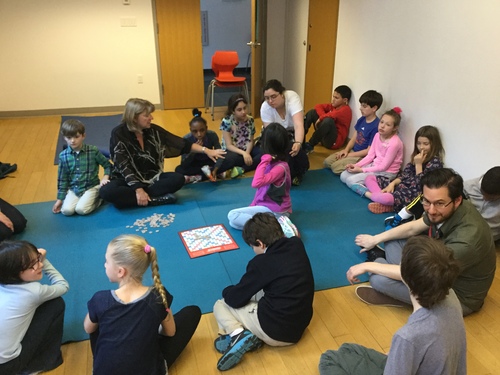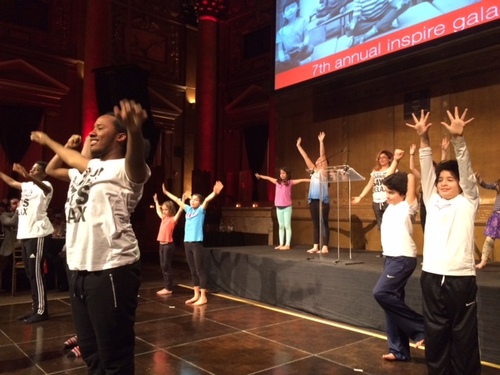May is National Mental Health Awareness Month which brings with it the gift of thirty one days to focus on all aspects of brain health. During Patrick Kennedy’s 2016 State of the Union in Mental Health, he talked about the obstacles to parity for mental health conditions which includes implementation: “The challenge for us is implementing — implementing what we know works.”
He then went on to list several goals the Kennedy Forum had for policies that aim at prevention — an important focus for a mental health policy meeting. For us, at the Flawless Foundation, prevention is the golden rule.
Most discussions of mental health only mention prevention long after diagnoses have been made, often when symptoms are at their worst. We think, How could this have been avoided? How can we stop this from happening to others? What this means is that we’re only ever treating symptoms, and how does that help the one in five Americans who develop these conditions?
We need to focus on how we prevent those one in five Americans from a worsening of their symptoms. We need to give everyone the appropriate tools to start checking their own mental health, and we need to educate our communities about how to get treatment. If we ever want to adequately address this health crisis, we need to get serious about prevention. Step one? Let’s talk about what it looks like.
“God forbid we would include mental health in our education system!” Patrick Kennedy exclaimed at the Kennedy Forum. We have health classes, drivers education and sex-ed classes in our schools, why not have mental health education classes, too?
During his speech, Kennedy announced that he and his wife, Amy Kennedy, are collaborating with his cousin, Tim Shriver, who is a co-founder of CASEL (Collaborative for Academic, Social, and Emotional Learning), to bring social and emotional learning into the educational system. This is big news for all advocates of social and emotional learning and prevention, because this means we can start properly teaching our children how to take care of an organ of equal importance in their bodies – the brain.
Social and emotional learning is about teaching children how to identify and regulate their emotions. Proponents of this work hold that emotional intelligence is a skillset like any other skillset, in that it can be taught and that it can help kids become empathetic towards others, help them build relationships with others, and help them make better, more responsible decisions.
If we give our children the tools to be aware of their emotions –and to be aware of when they’re not feeling balanced — then they can ask for help when they need it. We can help them deal with life’s challenges and help them understand the behavior of others. We can help them maintain healthy brains by educating and empowering them.
One great example of a program that incorporates social and emotional learning into the very fabric of their mission is The Meeting House. An after school, weekend and teen program based in New York City, The Meeting House provides a warm, welcoming community for kids who may have challenges socializing in other environments. With a team that includes educators and a clinical psychologist, the program enables children to make lasting, caring friendships and build up extensive social and emotional skills.
Another important program that exemplifies prevention at its best is the work of Bent on Learning, a nonprofit that brings yoga classes to New York City public school students. Through mindfulness, breathing, and a focus on the mind-body connection, yoga can help kids slow down and process their emotions before acting on them. We recently had the priviliege of meeting some of the students in this program and one of them shared with us that after taking regular yoga classes, when she’s feeling stressed, instead of reacting: “I breathe and think about the consequences.”
Then there’s the work of innovators like Dr. Marc Brackett, the Director of the Yale Center for Emotional Intelligence. Dr. Brackett is the co-creator of RULER — which stands for Recognizing emotions in self and others; Understanding the causes and consequences; Labeling emotions accurately; Expressing emotions appropriately; and Regulating emotions effectively — an acronym for the core tenets of good emotional intelligence. This approach has been implemented across one thousand schools, reaching nearly one million students. That’s what we call Flawlessness in action!
From integrating brain health education and social and emotional learning into our children’s schools, to promoting more accepting, open communities for children to thrive, to incorporating yoga and mindfulness into our educational system –there are a lot of options when it comes to prevention. Like, Patrick Kennedy said above, “The challenge for us is implementing…”
Starting early with educating and empowering people with holistic tools and treatment to prevent drop out rates, suicide, unemployment, homelessness and most importantly human suffering – a challenge that I suspect everyone is up for taking on, no matter what side of any debate.
If you — or someone you know — need help, please call 1-800-273-8255 for the National Suicide Prevention Lifeline. If you are outside of the U.S., please visit the International Association for Suicide Prevention for a database of international resources.








